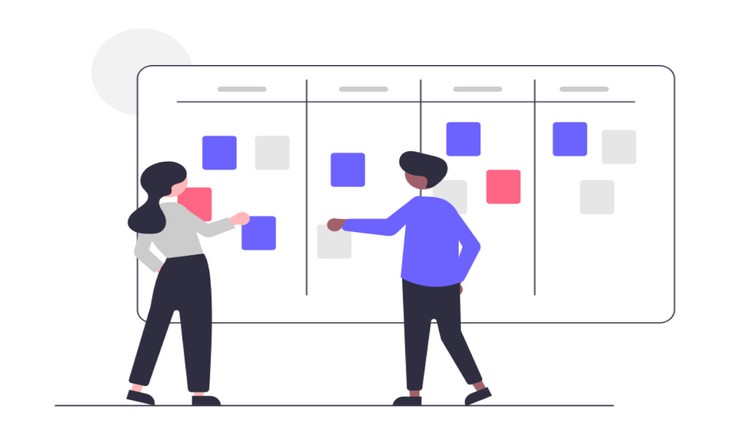
Learn all key concepts of Scrum and play an effective role in a Scrum team!
☑ Understand the history of Agile and differences between the traditional waterfall model and various Agile practices
☑ Learn what scrum is and why it is so powerful for delivering even the most complex project on time
☑ Understand all key concepts of Scrum that you can apply to your projects
☑ Understand the planning poker estimation technique
☑ Assist with your organization’s transformation to Agile
☑ Test your understanding throughout the course with quizzes
Brief history of software development processes
In the earliest days of software development, code and fix model was mainly used. Development team started the work with a very general idea of the product and then repeated the same process of informally coding, testing and fixing issues until the product was ready for release. It was common to forego planning.
The waterfall model was officially identified as an alternative to the code-and-fix model in 1970. The classic waterfall model has served the software development community well for many years. Though this model works well when requirements are simple and crystal clear, and changes are not expected, it is not found suitable for complex products where requirements cannot be finalized upfront and changes are frequently expected. High schedule and cost variances are very common in projects that follow the waterfall model.
Why Scrum?
Many frameworks, models and methods were introduced in 1990’s to address the problems with the waterfall model. Of all the frameworks and models, Scrum is extremely popular. Scrum follows iterative and incremental approach for development. Accordingly, a large development work is broken down into smaller chunks and each chunk is delivered iteratively. In Scrum, each iteration is called a Sprint. Each Sprint has a consistent period of 2 to 4 weeks. Sprint is the heart of Scrum. The commitment to short iterations of work is the main reason for the popularity of Scrum.
Scrum is highly suitable for developing, delivering and sustaining complex problems, products or services where requirements are not known upfront and changes are most likely to happen during the course of development.
Why should I take this course?
This course has been created by a software professional who has over 25 years of experience in software development with lots of practical experience in Scrum and other Agile implementations. Moreover, this course covers all key concepts of Scrum with examples and is designed in such a way that anyone who does not know anything about Scrum can easily learn all of them from scratch and play an effective role in a Scrum team. This course will also help enrich the knowledge of those who already know a little bit of Scrum or currently play the role of Product Owner, Scrum Master or Developer without proper training. Refreshing and gaining more knowledge will make them perform better and more effectively in their roles.
English
Language
Introduction
Course Overview
Agile Fundamentals
Overview of Agile
Code and Fix Model
Waterfall Model
Iterative and Incremental Model
Rapid Application Development (RAD)
Dynamic Systems Development Method (DSDM)
Scrum
Feature Driven Development (FDD)
Extreme Programming (XP)
Birth of Agile
Quiz – Agile Fundamentals
Agile Manifesto
Background
Values
Principles
Scrum
Scrum Theory and Values
Work Structure
Scrum Artifacts
Quiz – Scrum Work Structure and Artifacts
Definition of Done (DoD)
Scrum Team – Roles and Responsibilities
Quiz – Scrum Roles and Responsibilities
Estimation
Quiz – Estimation
Scrum Meetings
Quiz – Scrum Meetings
Scrum Board
Scrum Charts
Quiz – Scrum Board and Charts
Workflow
Frequently Asked Questions (FAQ)
Conclusion
Conclusion